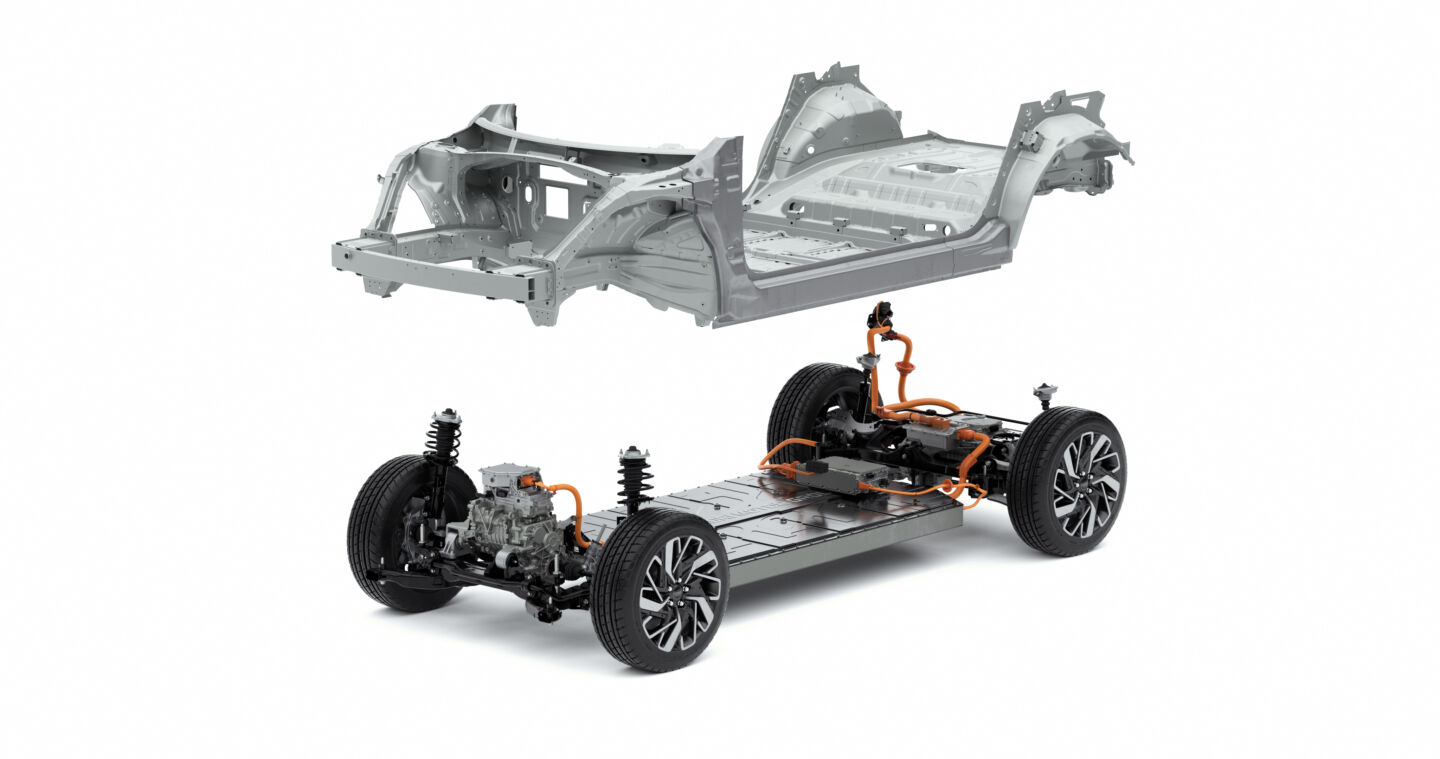EV basics
Click through to find out more on:
Different types of electric vehicles (EVs)

Battery electric, hybrid electric and plug-in hybrid electric vehicles are all fully or partially powered by electricity, but they’re not all the same. The below table outlines the key differences between the main types of electric vehicles.
| Battery electric vehicle (BEV) | Plug-in hybrid electric vehicle (PHEV) | Hybrid electric vehicle (HEV) |
|---|---|---|
| These cars run purely on electricity, so there’s no petrol or diesel involved. They don’t produce emissions and the battery capacity determines the driving range. BEVs are quiet, cost-efficient and eco-friendly. They are required to be plugged in for the battery to be charged. It makes use of regenerative braking to store electricity. | A PHEV is powered by fuel and electricity. The key difference compared to a HEV is the battery is charged independently via a power outlet or charging station. These cars will typically run on electricity for 50-60km before the petrol engine takes over to increase the car’s range. It makes use of regenerative braking to store electricity. | HEVs run on both petrol and electricity. They have an electric motor and a petrol engine. When you start driving, the electric motor kicks in, then the petrol engine takes over as you accelerate. In a hybrid, a small battery is recharged while you drive via a process called regenerative braking, so it’s always ready to go without ever needing to be plugged in. You still need to fill up with petrol, but your fuel economy is better compared to a petrol car. |
Key components Electric motor(s) Battery (~60 kWh) | Key components Electric motor(s) Battery (~15 kWh) Engine | Key components Electric motor(s) Battery (~1 kWh) Engine |
Fuel source Electricity | Fuel source Electricity Petrol/Diesel | Fuel source Electricity Petrol/Diesel |
Examples Tesla Model 3, BYD Atto 3, Nissan Leaf. Full list of BEV models | Examples Mitsubishi Outlander PHEV, MG HS Plus EV, Kia Niro EV. Full list of PHEV models | Examples Toyota RAV 4 HEV, Lexus ES HEV, Subaru Forester HEV |
Pros and cons of EV ownership
Like anything you own owning an EV has its pros and cons compared to internal combustion engine (ICE) vehicles. We’ve listed some of the most common ones in the below table. Please note this is general advice and you should undertake your own research before making your decision.
| Pros | Cons |
|---|---|
Lower running costs
| Higher purchase cost
|
Environmentally friendly
| Lower driving range
|
Driving experience
| Lack of readily available charging
|
Cost of owning an EV
While the upfront cost of purchasing an EV is in most cases higher than an equivalent petrol car, the total cost of ownership (TCO) can be competitive or even cheaper with ICE vehicles.
The TCO for EVs encompass a range of factors that, when combined, represent the overall expense of owning an EV. These factors include:
- vehicle purchase cost: This is the upfront cost of the EV, which can be affected by various incentives or subsidies available at the time of purchase
- depreciation: EVs, like all vehicles, depreciate over time. The rate of depreciation can vary based on the make, model, and market conditions
- financing: The cost of borrowing money to purchase the EV, including interest rates and loan terms, contributes to the TCO
- fuel costs: For EVs, this is related to the cost of electricity for charging. It's generally lower compared to the fuel costs for ICE vehicles
- maintenance: EVs often have lower maintenance costs than ICE vehicles because they have fewer moving parts and less routine maintenance, like oil changes
- insurance costs: Insurance premiums for EVs can vary but are generally included in the TCO calculations
- rebates and incentives: Various incentives and rebates are available for EV purchases, which can lower the overall cost. You can search for what’s currently available at energy.gov.au
- travel: The amount and type of driving done can influence the TCO, as more mileage may lead to higher electricity costs and potentially more maintenance.
Considering these components holistically provides a more accurate measure of the true cost of owning an EV over its lifespan, rather than just looking at the purchase price alone. It's also worth noting that these factors can vary widely depending on your location, usage patterns, and changes in technology or government policy.

Charging an EV
Many EV owners who charge their car at home say it is easy, cheap and convenient to charge while idle in their driveway or garage. As outlined in more detail in our home charging guide, it can be charged from a standard power socket or dedicated wall charger.
For those who don’t have access to charging at home or require charging in transit to a destination, you can use public EV charging stations, similar to how petrol cars fill up at service stations. You can learn more in this public EV charging guide.